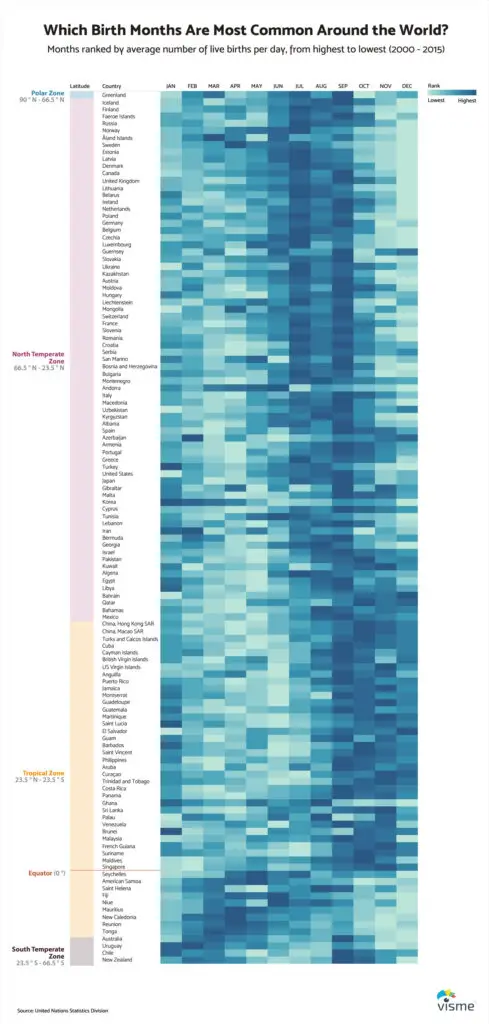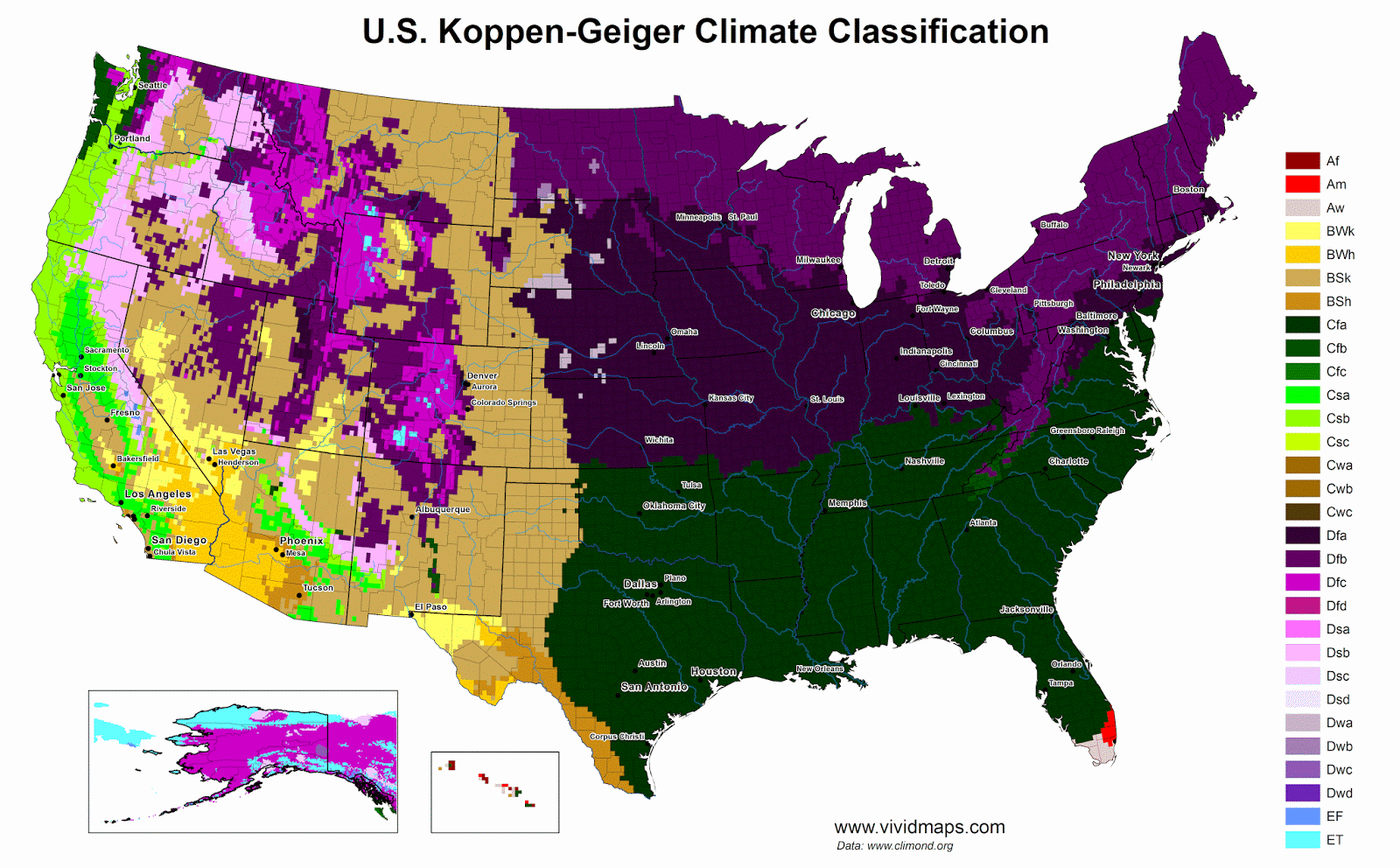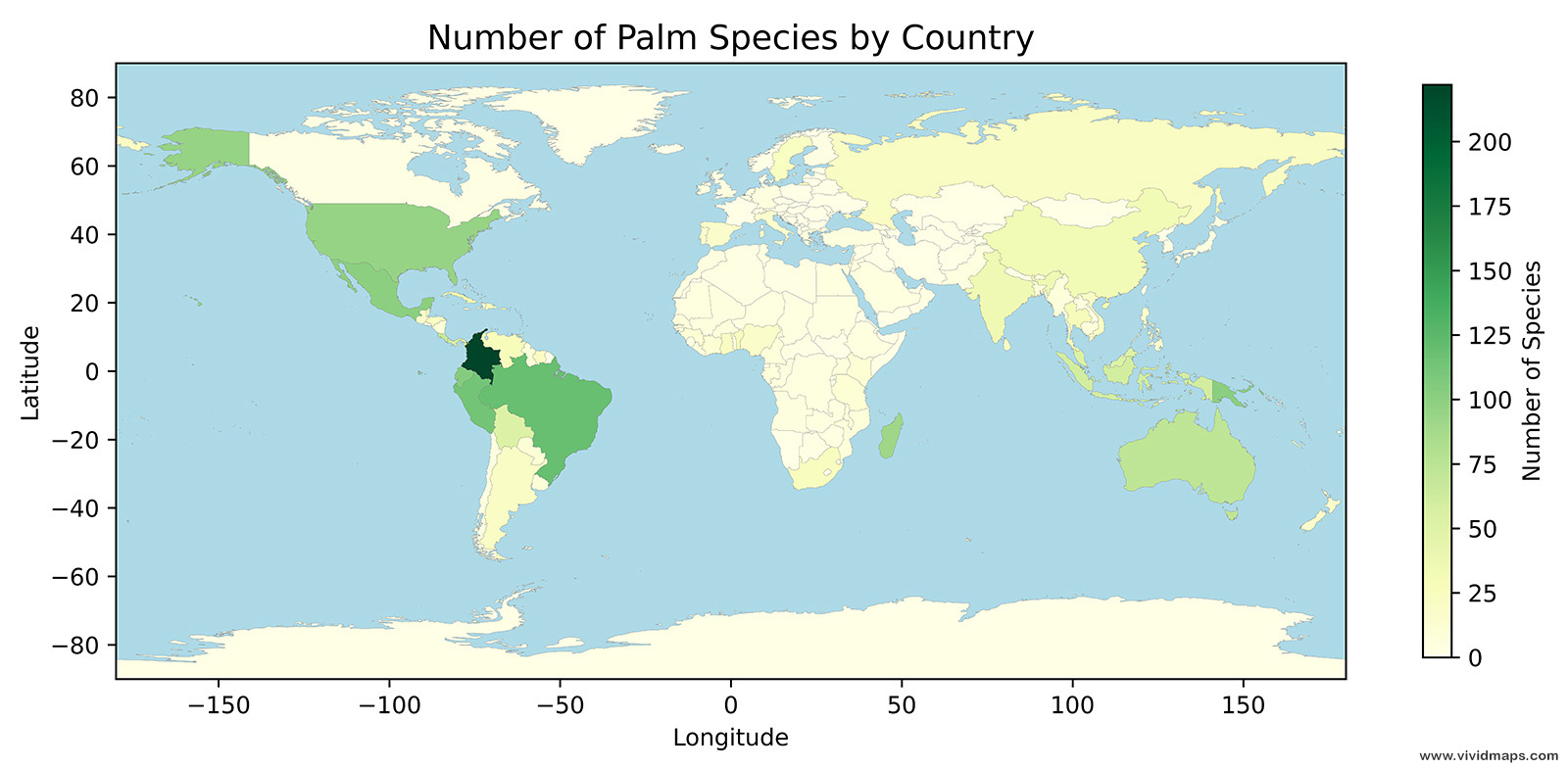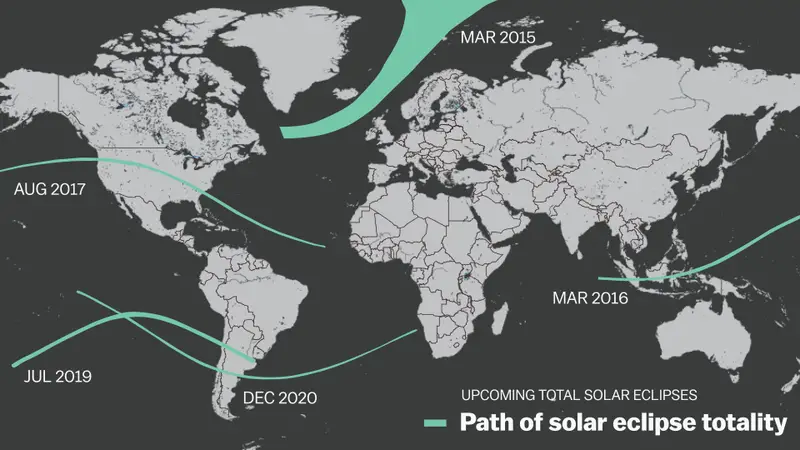The Most Common Birth Months Worldwide, Mapped
This post may contain affiliate links. As an Amazon Associate, we earn from qualifying purchases.
Not just are specific birth months more prevalent than others, but there looks to be a connection among both peak birth months and seasons and peak birth months and geographical latitude.
The Visme team using live births by month of birth data provided by the United Nations, created interesting visualization that shows the most common birth months worldwide.

According to the created infographic, the summer months of July, August, and September are the most typical birth months in higher latitude nations in the northern hemisphere. As the latitude decreases in subtropical and tropical countries, the peak birth months change later to October, November, and December.
For nations in the southern hemisphere, the peak birth months are gathered around March, April, and May.

These data are confirmed by the thorough analysis of human birth seasonality published in the Proceedings of the Royal Society.

Is there a logic behind the prevalence of certain birth months over others? If we were to consider a forty-week pregnancy period to determine the most frequent months of conception, October to December would top the list for nations in the northern hemisphere.
Some researches have shown that there is typically an increase in sexual activity around Christmastime. Even a Google search study shows that searches associated with sex and mating habits rose during the winter and early summer.
In her article for Slate.com, Boer Deng also did the analysis and resolved that nations in northern latitudes were conceiving children more frequently during the autumn, while those farther south were doing so through the winter.
According to research published in The Journal of Reproductive Rhythms, the perfect time of the year to conceive is when the sun is out for 12 hours, and the temperature is between 50 and 70 °F (10 to 21°C). For reasons that are not known, these are the ideal conditions for conception, either because they stimulate sperm generation or ovulation.









yay